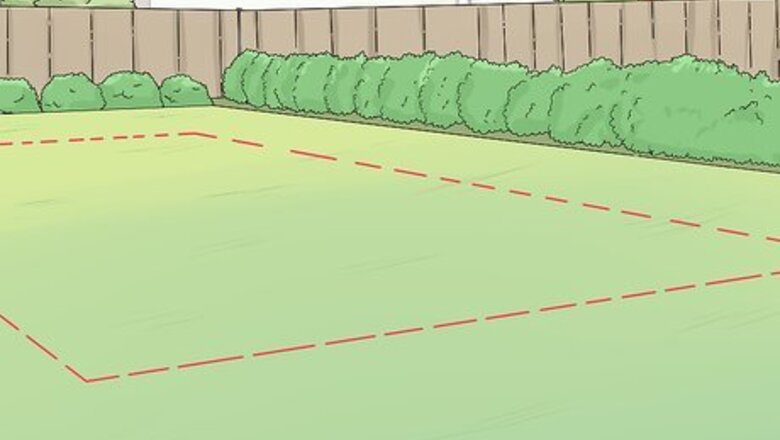
views
Designing Your Course
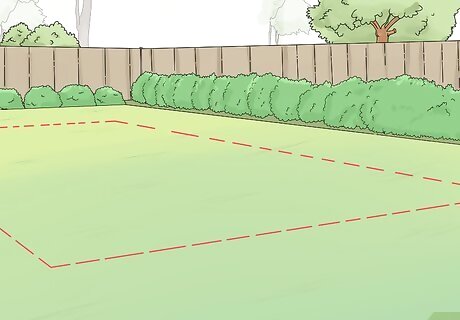
Find a good spot to build your course. Pick the spot where you want to build your course before you draw up your plans, since you might have to account for narrow spaces, low-hanging tree branches, or other environmental factors. Pick a spot that's free of dangerous obstructions like protruding tree roots or sharp rocks. The best place to build is a big, open backyard where you'll have plenty of room to run, jump, and swing. Take measurements of the space where you want to build so you can plan the exact dimensions of your course.
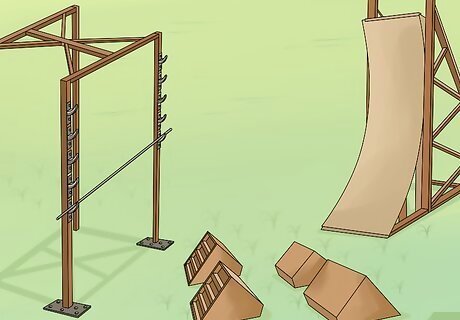
Decide which Ninja Warrior obstacles you want to include in your course. Popular obstacles include the Salmon Ladder, Warped Wall, and Quad Steps, but with the right materials, you can replicate many of the challenges you see on the show! Choose obstacles that will work with the space you have. For instance, if you have a very narrow backyard, you might want to build only a salmon ladder. If you can't dig post holes in your yard, you might only build the quad steps. Don't be afraid to get creative! If you have a sturdy tree branch in your yard, for instance, you could hang a series of ropes from the branch to create your own Tarzan Rope, where you must travel a distance by swinging from rope to rope. Always make sure your obstacles are totally secure before testing them out. Getting injured is the last thing you want when you're training.
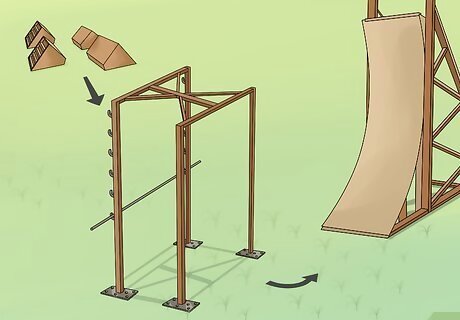
Decide on the order of your obstacles. If you're including several Ninja Warrior obstacles, decide how you want to go through them. The order changes sometimes on the show, but the Quad Steps is usually the first obstacle, and the Warped Wall is usually the last, but you can arrange your course however you want. Try arranging your obstacles in varying intensity. For instance, if one obstacle requires a lot of upper body strength, try following it with one that builds your balance, then one focusing on leg strength.
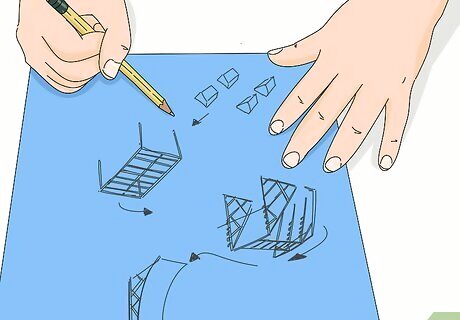
Draw your blueprints. Draw the obstacle course exactly as you picture it on a large piece of paper, using the measurements you took from your yard. By having a blueprint, you can plan out exactly how your obstacles will fit in the space you have available. Having a plan in advance can also help you design your obstacles to be as safe as possible. When you're drawing a blueprint, you want to draw to scale. For instance, you might decide that 1 inch (2.5 cm) on your blueprint is equal to 1 foot (0.30 m) in real life. In that case, you would draw a 12 feet (3.7 m) post exactly 12 inches (30 cm) tall on your blueprint. Your blueprints should show a top view and a side view to help you picture it as you build. If you’re using found materials to build your course, try to gather them up before you draw your blueprint, since they could alter the dimensions of your plans.
Building a Salmon Ladder
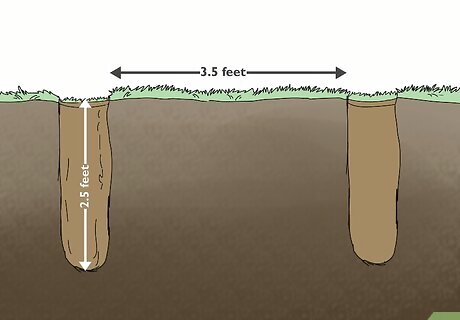
Dig 2 post holes 3.5 feet (1.1 m) apart and 2.5 feet (0.76 m) deep. You can adjust the width of the Salmon Ladder by moving the posts closer together or further apart, but on the show, the obstacle is 3.5 feet (1.1 m) wide. Use a post hole digger to easily remove dirt for your posts. If you don't have one of these, use a small hand shovel. Choose posts that will be are at least 14.5 metres (48 ft) long. Your posts need to be buried at least 2.5 feet (0.76 m) deep, and the Salmon Ladder should be about 12 feet (3.7 m) high to give you room to climb.
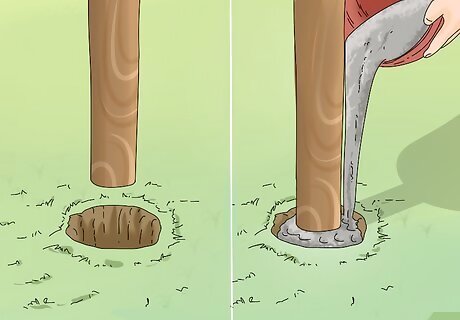
Anchor your posts into the ground. Pour cement around the base of your posts after you get them buried in the ground. Make sure to give the cement plenty of time to dry before you move to the next step! If you aren't able to cement your posts in place, pack dirt around them as tightly as you can, then use short pieces of wood to brace the posts. The wood should be about 2 feet (0.61 m) long. Place the bracing wood at a 45 degree angle to the post. Ensure one end of the wood is resting securely on the ground, then nail the other end to the post.
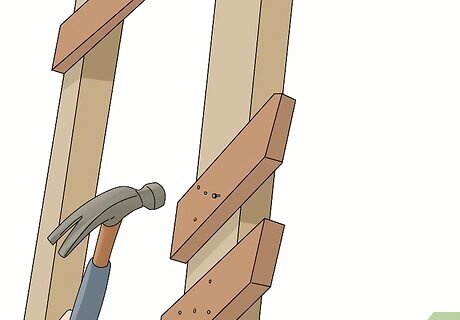
Nail rungs into your post spaced 1 foot (0.30 m) apart. Your rungs should be angled at about 35 degrees and should stick out about 4 inches (10 cm). The regulation spacing between rungs for a Ninja Warrior course is 1 foot (0.30 m), but you can space them closer together if you don’t want as much of a challenge. Place your first rungs about 4 feet (1.2 m) high. Your rungs can be blocks of wood, large nails, or any other material that that will support your weight when it’s nailed to your posts.
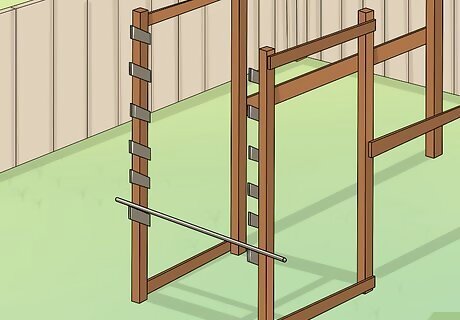
Place a metal bar on the rungs to use your Salmon Ladder. Use your upper body strength to move the bar upwards from one set of rings up to the next, climbing the ladder with a series of pull-up maneuvers and jumps. If climbing the Salmon Ladder is too difficult for you, use the salmon ladder to practice pull-ups.
Building Your Quad Steps
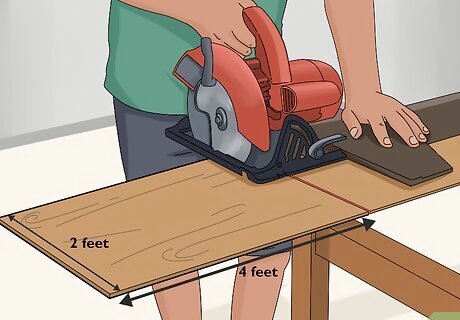
Cut a sheet of plywood into 4 2 by 2 ft (0.61 by 0.61 m) squares. These will be the surface of your Quad Steps. You can make these any size you want, but this is an ideal size for training for Ninja Warrior. A standard size sheet of plywood is 4 by 8 ft (1.2 by 2.4 m). If you cut your squares into 2 by 2 ft (0.61 by 0.61 m) pieces, you should only need 1 sheet of plywood.
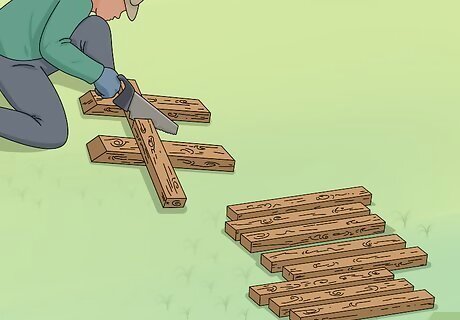
Cut 16 2 ft (0.61 m) sections from lengths of lumber and divide them. The standard size board for framing is 2 by 4 inches (5.1 by 10.2 cm) but you can use whatever lumber you have on hand, as long as it is weather-treated and is free of any cracks or soft spots. Place 8 sections of wood in one pile to be used for framing, and the remaining 8 pieces of wood in another pile to be your kickstand boards, which are used to hold the Quad Steps upright as you jump across them.
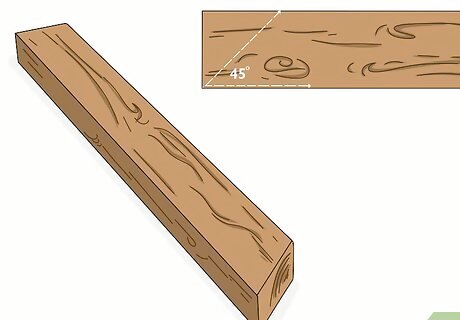
Cut off 1 corner of each kickstand board at a 45 degree angle. You want the kickstand to rest flush against the platform to hold the platform at an angle. Each cut should start about 1 inch (2.5 cm) from the corner of the board. Carefully use a saw to make these cuts. Always use caution when using a saw. Wear safety goggles and keep your hands free from the blades.
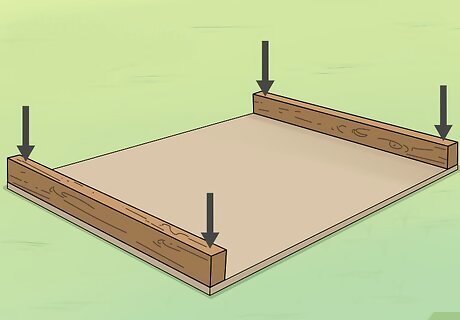
Lay 2 pieces of framing wood and the plywood on top of each other. The framing pieces should be turned up on their sides and should be touching the outside edge of the plywood.
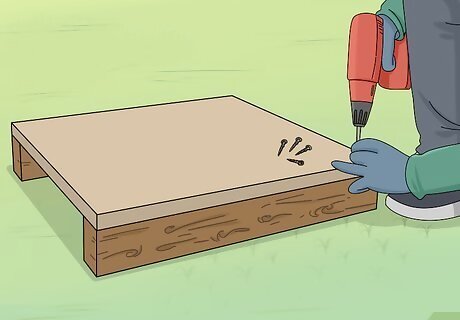
Attach the plywood to the framing boards with wood screws. Use 4 2 in (5.1 cm) wood screws for each framing board to ensure they are secure, for a total of 8 on each platform.
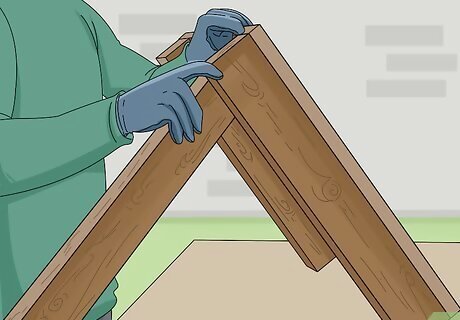
Angle the platform and 2 kickstand boards so they are flush together. The kickstands should rest against the framing wood at the corner of the platform. When you have the kickstands aligned with the platform, the whole assembly should stand upright, with the platform propped about 45 degrees off of the ground.
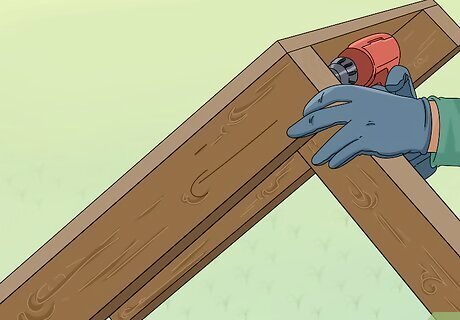
Attach each kickstand board to the framing board with a long wood screw. Make sure that the kickstands are mounted securely, since they will support most of your weight as you jump. Now, enjoy your Quad Steps! If you want to adjust the angle of your Quad Steps later on, use a bolt when you’re attaching the kickstands instead of a screw.
Building the Warped Wall
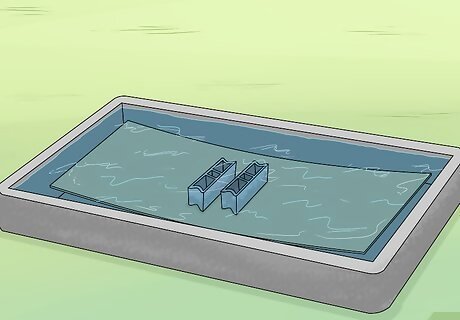
Soak 2 4 by 8 ft (1.2 by 2.4 m) sheets of plywood in water to soften them. If you try to bend dry plywood into a curve for the Warped Wall, it will crack. Place the plywood in a pool or use spare pieces of wood to prop up the edges of a tarp. Hold the plywood in the water by placing a cinder block in the middle, and leave it there while you build the rest of the frame.
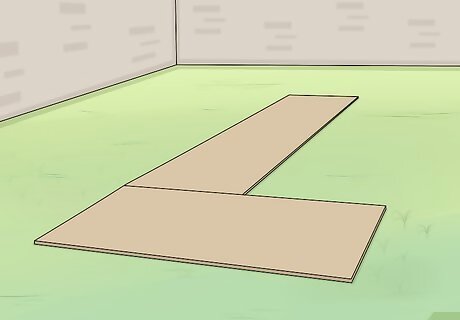
Lay sheets of plywood in 2 L-shapes. These will eventually be the sides of your Warped Wall. The amount of plywood you will need will depend on the size you want your Warped Wall to be. On the show, the Warped Wall is 14 to 16 feet (4.3 to 4.9 m) high, but you can adjust the height to your preferences. For most walls, 3 pieces of plywood will be enough. Laying the plywood in an L-shape will allow you to create a curve along the side of your wall.
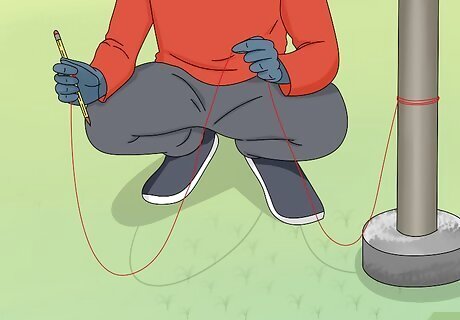
Tie one end of a piece of string to a pencil and anchor the other end. By tying the free end of the string to a fixed location, it will act as a compass, creating a circle as you travel around the center point. This will help you create the curve for your Warped Wall. The string should be long enough so that the pencil can sweep across the plywood in a gentle curve. If you don't have anything to tie the string to, have someone stand in one place and hold the string.
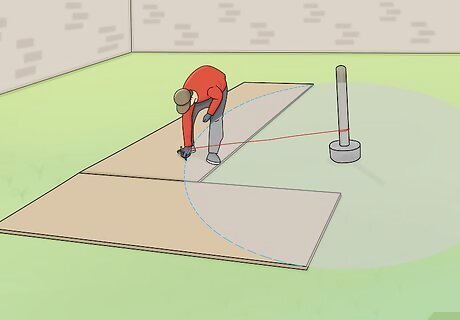
Draw a wide curve on both sets of plywood. After you draw the curve on the first set of plywood, arrange the second set so the string is anchored exactly the same distance away, and draw the same curve again.
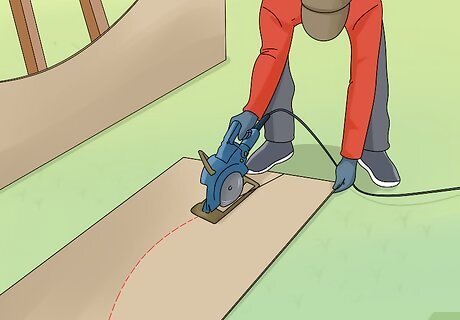
Cut the plywood along the curve you drew. Use a saw to carefully cut both sets of plywood. Once this is done, you have the sides for your Warped Wall.
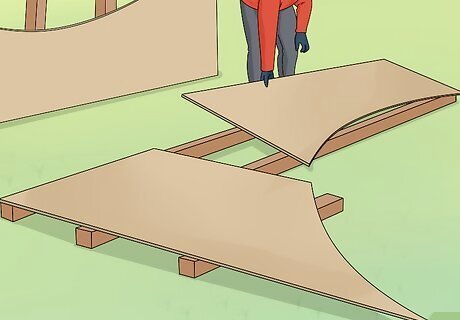
Stabilize the plywood sides with lumber. Use 4 by 4 in (10 by 10 cm) or another heavy type of lumber to create a frame on your plywood. This will reinforce the plywood and will give the final structure more stability. Make sure you leave enough space between the frame and the edge of the sides for your plywood curve.
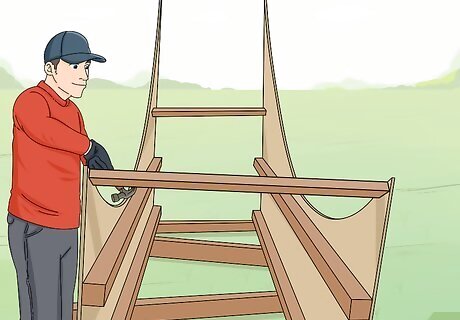
Nail in crossbraces along the curve. Insert wooden boards cut the width of your wall all along the curve to attach the 2 sides of the wall together. Space these crossbraces out evenly along the length of the curve. About 8–10 inches (20–25 cm) should be sufficient. You can also add extra plywood to what will eventually be the top and bottom of your wall at this time. The length of the crossbraces should be cut to fit the width of your Warped Wall. The amount of crossbraces you use will depend on how far apart you space them and how long your Warped Wall will be. For instance, if you nail the boards 8 inches (20 cm) apart and the length of your curve is 14 feet (4.3 m), you will need 21 braces.
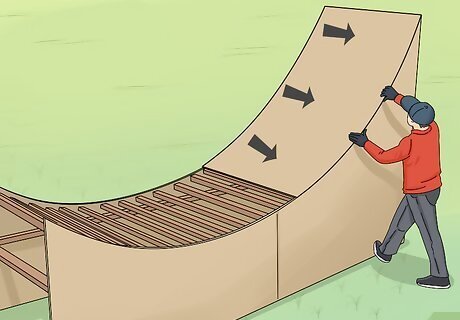
Lay the wet plywood on top of the crossbraces and nail it down. The crossbraces will help shape the plywood into a curve, and it should bend easily since it's been soaking in water.
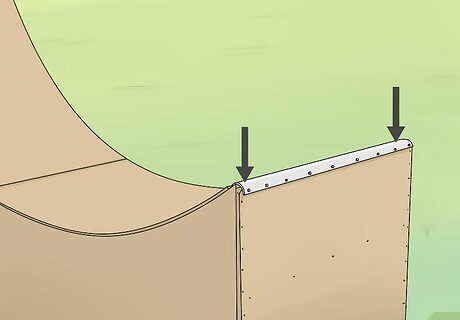
Finish with a piece of PVC at the top of the curve to act as the ledge. You don’t want to grab onto the raw wood, since you might get splinters. Cut a length of PVC pipe to match the width of the wall and attach it to the top corner of the wall so you have something to hang on when you reach the top!



















Comments
0 comment